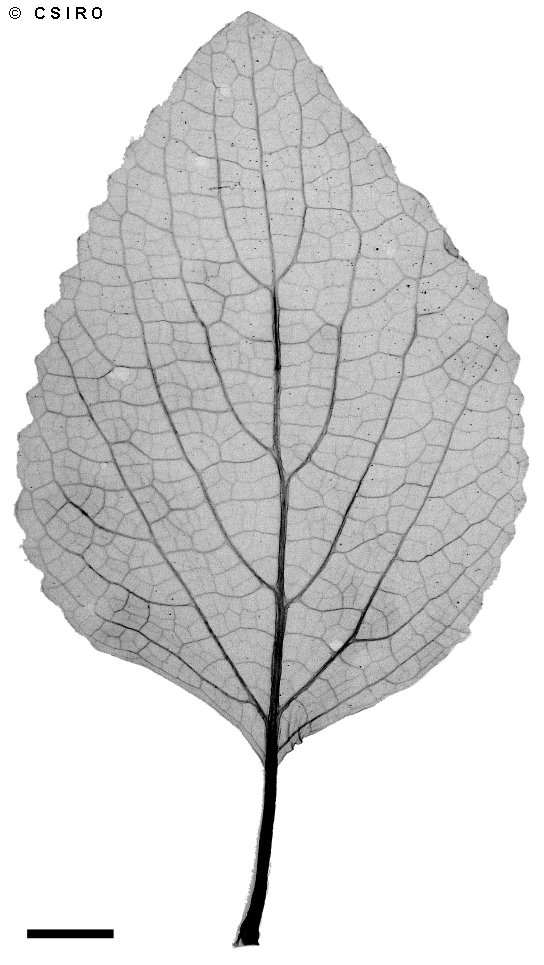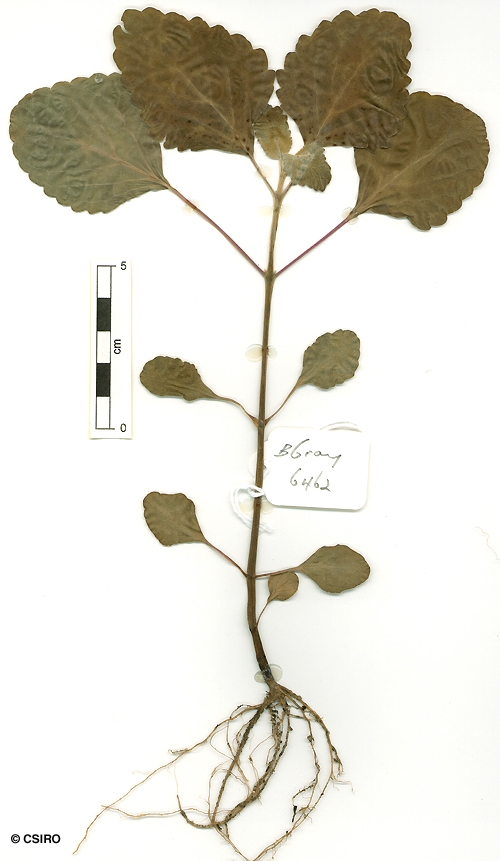Australian Tropical Rainforest Plants - Online edition
Coleus dumicola (P.I.Forst.) P.I.Forst.



Paton, A.J. et al (2019) Phytokeys 129: 42.
Flowers and fruits as a shrub about 1 m tall.
Leaf blades about 4.5-8 x 3.5-7 cm, petiole about 1-1.8 cm long, grooved on the upper surface. Lateral veins about 4-7 on each side of the midrib, curved but not forming definite loops inside the blade margin. Leaf blade margins crenate with about 12-14 teeth on each side of the leaf blade. Underside of the leaf blade clothed in white hairs and white glands. Crushed leaves emit a pleasant (?) herbal odour.
Inflorescence up to 30 cm long, flowers clustered in groups of about 10-12. Flowers on slender pedicels about 4-6 mm long. Calyx about 2.8-3.0 mm long. Corolla about 10-12 mm long, outer surface sparsely hairy and glandular. Anther filaments about 9-11 mm long, anthers about 0.5-0.7 x 0.4-0.5 mm.
Cotyledons reniform, about 6-8 x 8-10 mm. First pair of leaves broadly ovate, margin smooth, upper and lower surfaces pubescent. At the tenth leaf stage: margin crenate, both the upper and lower surfaces of the leaf blade densely clothed in short pale hairs. Leaves aromatic when crushed. Stem slightly 4-angled, densely clothed in short, prostrate, white or pale hairs. Seed germination time 17 to 25 days.
Endemic to CYP and NEQ. Altitudinal range from 350-450 m. Usually grows in rocky areas in or on margins of rain forest or monsoon forest.





